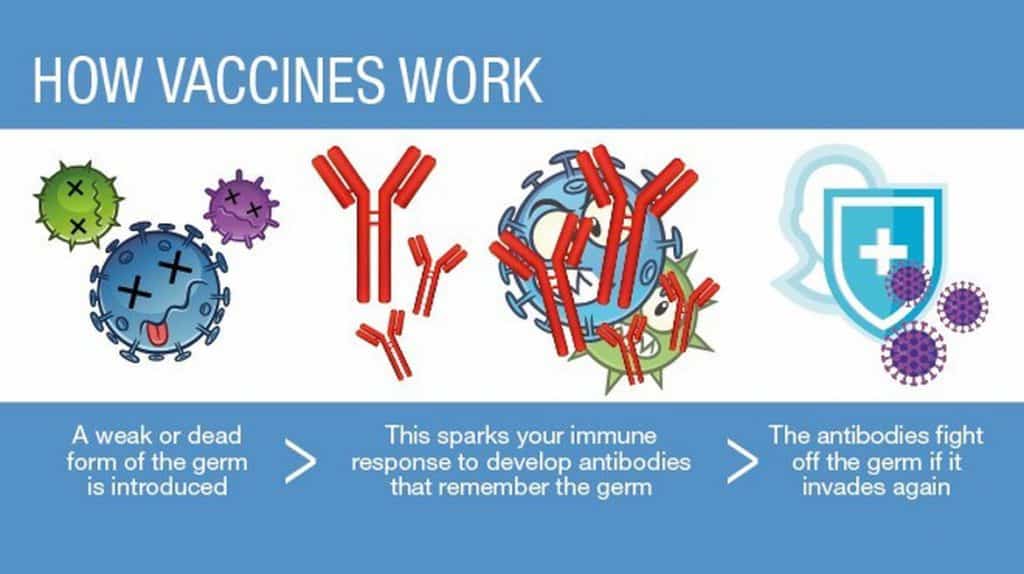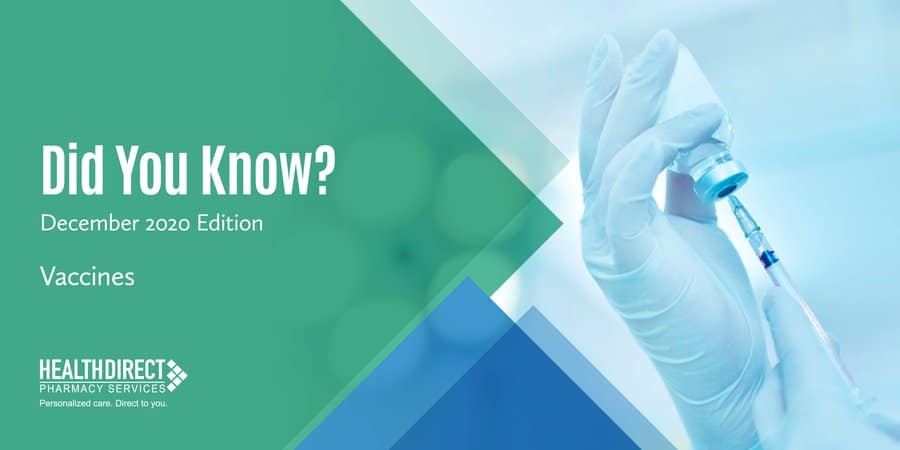Vaccines Save Lives
Vaccines are considered to be one of the greatest public health accomplishments in history.1 Vaccines prevent diseases and reduce rates of death caused by infectious disease. Immunization programs developed in the United States have nearly eliminated many once common vaccine-preventable diseases.
So, what is a vaccine and how does it work?
In order to understand how a vaccine works, it’s important to know how the body naturally fights off germs. The human body fights illness using the immune system. It is the body’s defense against infection. When bacteria or viruses invade the body, they attack and multiply, which can lead to infection and illness. To fight the infection, the immune system uses white blood cells that consist primarily of the following:
- Macrophages: these white blood cells swallow up and digest bacteria and viruses. They leave behind parts of the invading germs called antigens that the body identifies as dangerous, stimulating antibodies to attack them.
- B-lymphocytes: these are defensive white blood cells that produce antibodies that attack the antigens left behind by the macrophages.
- T-lymphocytes: these are also defensive white blood cells that attack cells in the body that have already been infected.
When a bacteria or virus is first encountered by the body, the immune system uses all of its germ-fighting tools to get over the infection. Once the infection is cleared, the immune system remembers what it learned about how to protect the body against the disease. If the body encounters the germ again, T-Lymphocytes, called memory cells, act quickly to clear the infection. B-lymphocyte memory cells are also activated and start producing antibodies to attack the familiar antigen.
Vaccines work by imitating an infection. They contain antigens that have been weakened or killed so they do not produce clinical disease. The antigens in the vaccine stimulate the immune system to produce T-lymphocytes and antibodies. The imitation infection can cause minor symptoms, such as fever, while the body builds immunity. Once this imitation infection is cleared, the body is left with T-lymphocyte and B-lymphocyte “memory cells” that will remember to fight that particular disease in the future. It is important to note that this process of producing the immune cells typically takes a few weeks after vaccination, therefore it is possible that a person infected with a disease just before or just after the vaccination could develop symptoms and get a disease, because the vaccine has not had enough time to provide protection.

Vaccine Classifications
Vaccines are generally classified into 2 categories – live, attenuated vaccines and inactivated vaccines.
- Live, attenuated vaccines: these contain a version of the living virus or bacteria that has been weakened so that it does not cause serious disease in people with healthy immune systems. These types of vaccines stimulate an immune response similar to that seen following a natural infection. Live vaccines may not be suitable for patients with compromised immune systems, such as those undergoing chemotherapy, because these vaccines could result in uncontrolled replication of the pathogen and clinical manifestations of the disease.
- Inactivated vaccines: these vaccines are made by first growing the virus or bacteria in a laboratory and then inactivating or “killing” it using heat or chemicals. These types of vaccines cannot replicate; therefore, it is not possible for them to cause disease, even in immunocompromised individuals. Inactive vaccines result in production of antibodies.
Vaccines Protect both You and Others
Remember, vaccines don’t just protect the person receiving them, they also protect the people around them. When enough people are vaccinated against a certain disease, the germs can’t travel as easily from person-to-person, making it less likely for the entire community to get the disease. This concept is referred to as herd immunity. Side effects from vaccines are generally mild, but many vaccine-preventable diseases can cause severe complications and can be deadly.
References:
- Centers for Disease Control and Prevention. Ten great public health achievements-United States, 1900-1999. MMWR Morb Mortal Wkly Rep. 1999; 48: 241-3.
- https://www.mayoclinichealthsystem.org/hometown-health/speaking-of-health/top-5-faq-about-vaccine
- https://www.cdc.gov/vaccines/hcp/conversations/downloads/vacsafe-understand-color-office.pdf




